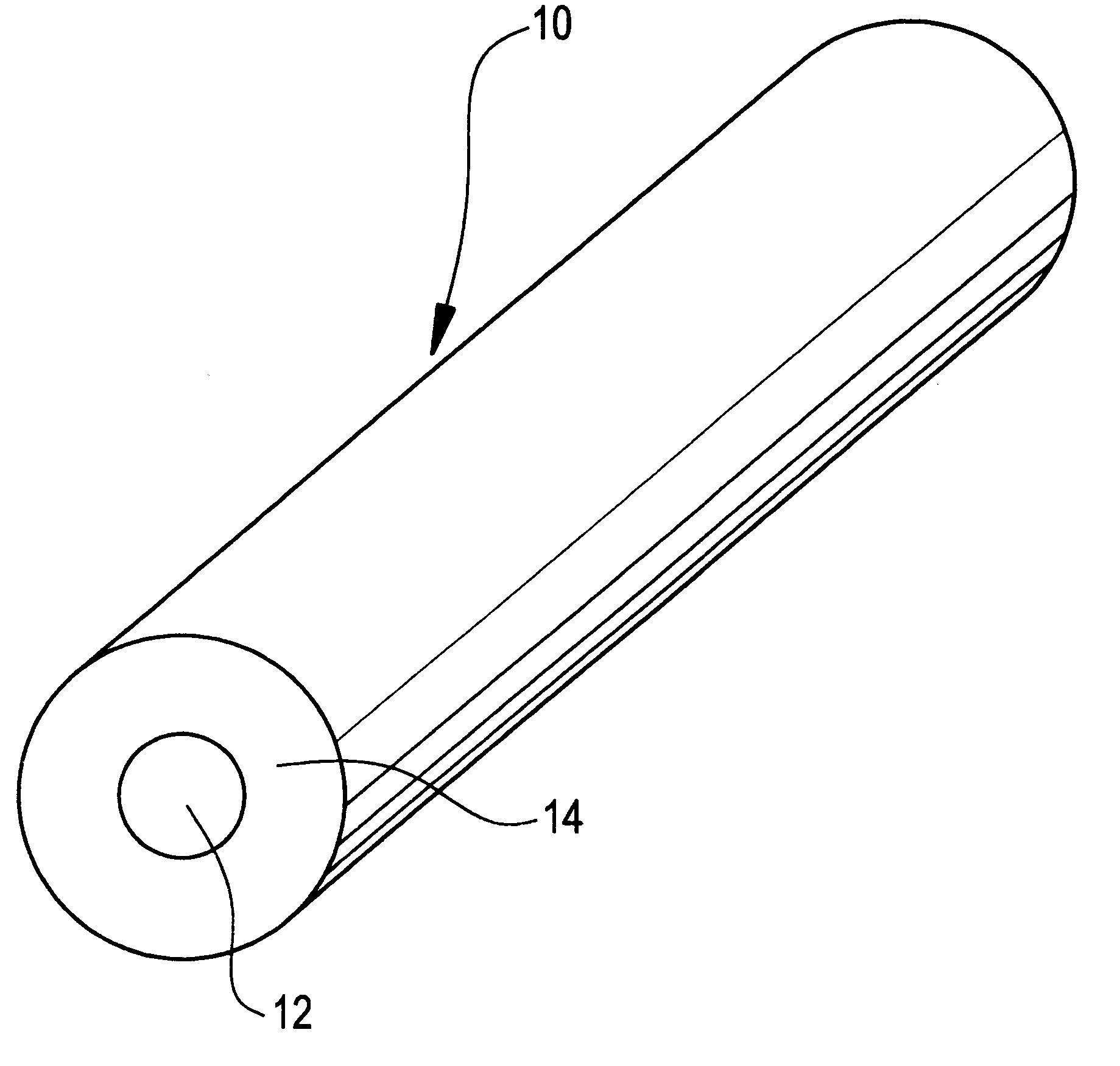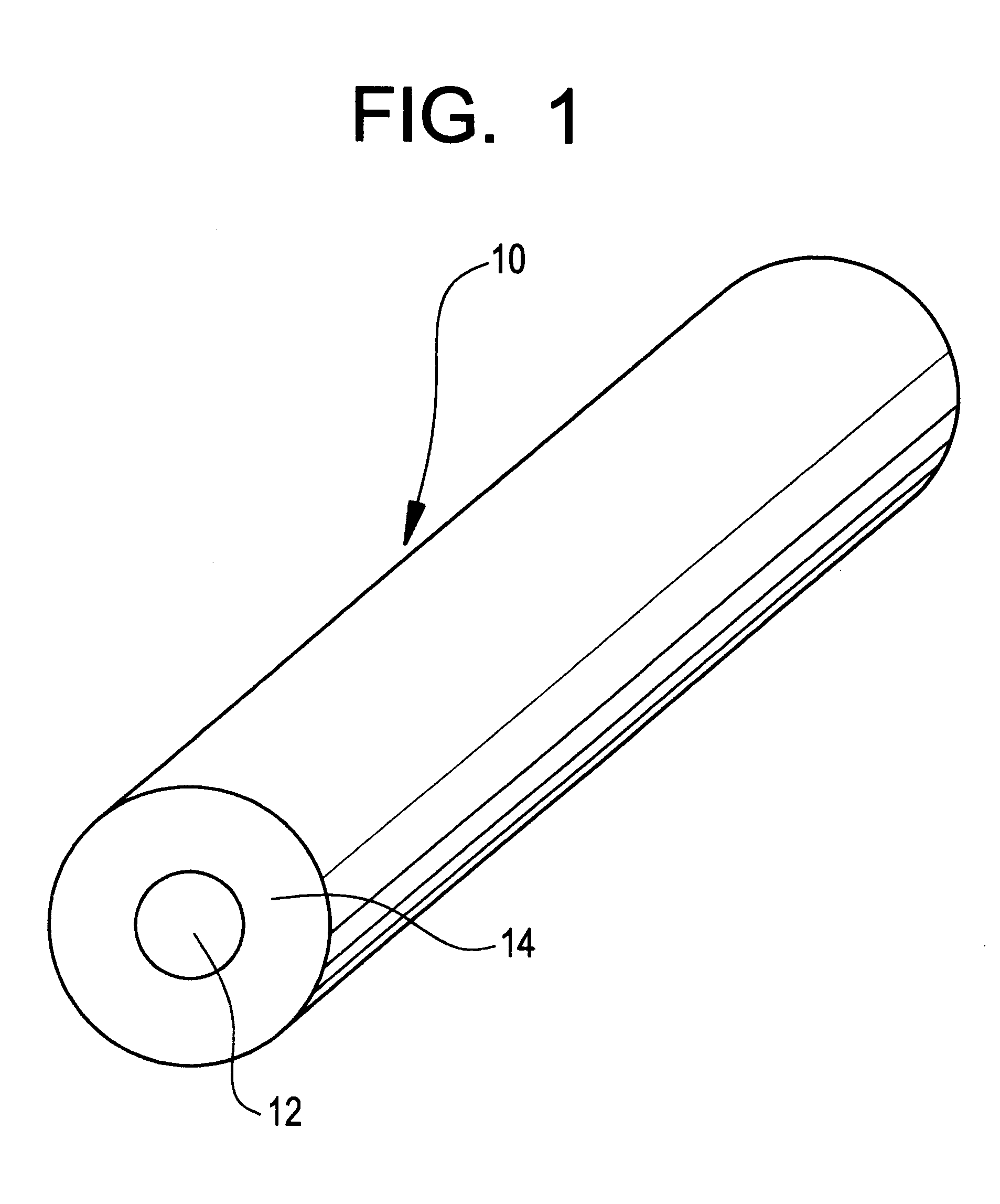Laser optimized multimode fiber and method for use with laser and LED sources and system employing same
a multi-mode fiber and laser technology, applied in the field of laser opt, can solve the problems of excessively low bandwidth, not optimized, and typically not a practical solution for system owners
- Summary
- Abstract
- Description
- Claims
- Application Information
AI Technical Summary
Problems solved by technology
Method used
Image
Examples
example 1
One method of testing the performance of the laser optimized multimode fiber is to manufacture a fiber having the desired DMD characteristics and test it with a variety of laser sources. The results of such testing are shown in FIG. 6.
The `effective` bandwidth (MHz.km) of the multimode optical fiber characterized by the DMD profile depicted in FIGS. 2-3 and 7 is shown in FIG. 6 for a variety of 780 to 850 nm Gigabit Ethernet System lasers. The fiber's overfilled (OFL) bandwidth, measured using the standard measurement and launch techniques referenced earlier in this application, was 288 MHz.km at 850 nm and 1054 MHz.km at 1300 nm. The fiber's laser bandwidth, measured using the standard measurement and launch techniques referenced earlier in this application was 930 MHz.km at 850 nm (using the patchcord with a 23.5 um diameter core as well as a 850 nm source laser with an RMS spectral width less than 0.85 nm, as described earlier) and 2028 MHz.km at 1300 nm (using a Fabry-Perot lase...
example 2
As a second example, the fiber whose measured DMD is in FIG. 4 and whose measured index profile is in FIG. 8 was tested for OFL bandwidth, for `defined` laser bandwidth using the 23.5 um patchcord at 850 nm and the 4 um offset at 1300 nm, and for `effective` bandwidth with a set of 13 Gigabit Ethernet System lasers. The standard OFL bandwidth was measured at 564 MHz.km at 850 nm and 560 MHz.km at 1300 nm. The `defined` laser bandwidth at 850 nm using the patchcord with a 23.5 um diameter core was 826 MHz.km, while at 1300 nm the laser bandwidth defined by using a Fabry-Perot laser with a 4 um offset had a value of 5279 MHz.km. The `effective` bandwidths measured with 13 Gigabit Ethernet System lasers at 850 nm or 780 nm were as follows: 1214, 886, 880, 876, 792, 786, 754, 726, 614, 394, 376, 434 and 472 MHz.km. Again, the defined laser launch for 850 nm with a patchcord with a 23.5 um diameter core yields a bandwidth which approximates the `effective` bandwidth seen with a number of...
PUM
| Property | Measurement | Unit |
|---|---|---|
| diameter | aaaaa | aaaaa |
| length | aaaaa | aaaaa |
| length | aaaaa | aaaaa |
Abstract
Description
Claims
Application Information
 Login to View More
Login to View More - R&D
- Intellectual Property
- Life Sciences
- Materials
- Tech Scout
- Unparalleled Data Quality
- Higher Quality Content
- 60% Fewer Hallucinations
Browse by: Latest US Patents, China's latest patents, Technical Efficacy Thesaurus, Application Domain, Technology Topic, Popular Technical Reports.
© 2025 PatSnap. All rights reserved.Legal|Privacy policy|Modern Slavery Act Transparency Statement|Sitemap|About US| Contact US: help@patsnap.com



